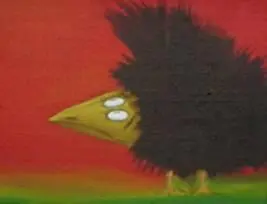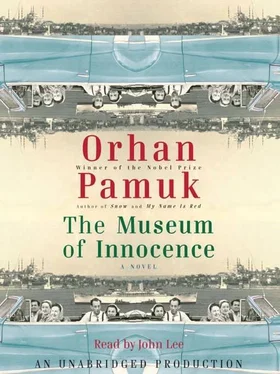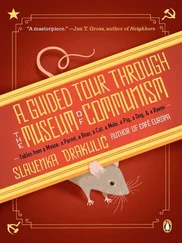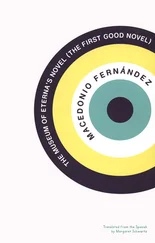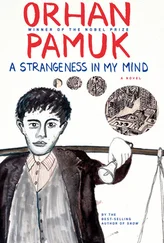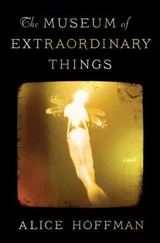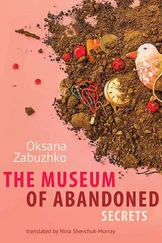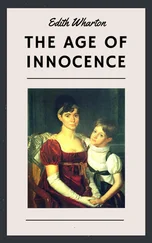This alone convinced me that I had no need to hear any more gossip to finish my book. I would only have wished to see Füsun, and to hear her. But before I could visit the ones who knew her best, there were the invitations from those who feared my book and insisted on receiving me in their houses preemptively, which invitations I accepted just for the pleasure of some company and sharing a meal.
And so it was that in the course of a very quick supper I was advised by Osman not to write this story at all. Yes, it might be true that it was his late brother’s negligence that had plunged Satsat into bankruptcy, but all his late father’s other firms were now engines of Turkey ’s export boom. They had many vicious competitors, and a book like this, beyond causing heartbreak and endless gossip as well, would only make Basmacı Holding a laughingstock and by association give Europeans just another excuse to laugh at us and put us down. Even so, I was able to leave the house with a lovely souvenir, a marble from Kemal’s childhood that Berrin Hanım handed to me in the kitchen, out of her husband’s view.
As for Aunt Nesibe, to whom Kemal had introduced me, she told me nothing new when I went to see her in her apartment on Kuyulu Bostan Street. Now she wasn’t crying just for Füsun, but also for Kemal, whom she described as her “only son-in-law.” She mentioned the museum but once: She used to have an old quince grater, and having got it into her head to make quince jelly, she wondered whether the grater she could find nowhere had perhaps wound up in the museum. I would surely know. If it was there could I bring it with me on my next visit? As I said good-bye at the door, she said, “Orhan Bey, you remind me of Kemal,” and she burst into tears.
Six months before his death, Kemal had introduced me to Ceyda, Füsun’s closest confidante, who in my view not only knew all Füsun’s secrets but understood Kemal best, too. This introduction had come about partly because Ceyda Hanım liked novels and had wanted to meet me. Her sons, now in their thirties and engineers both, were married, and their lovely brides, whose pictures she showed me, had already given her seven grandchildren. Her rich husband (he was the Sedircis’ son!), who was much older than Ceyda, looking slightly drunk and slightly senile, showed no interest in us or our story, even when Kemal and I admitted our overindulgence with raki .
Ceyda told me with a sweet smile how Füsun had discovered the earring Kemal had left in the Keskins’ bathroom on the evening of his first visit, and how though she’d told Ceyda about it right away, they’d decided together that Füsun should feign ignorance, just to punish Kemal. Like so many of Füsun’s secrets, that story Kemal Bey had already extracted from Ceyda years earlier. He had smiled painfully when he told it to me, pouring us each another glass of raki .
“Ceyda,” said Kemal later, “when I came to you for news of Füsun, you and I would always meet in Maçka, Taşlık. As you were telling me about Füsun, I would admire the view of Dolmabahçe from Maçka. When I checked recently, I discovered that I have accumulated many pictures of that view.”
As we’d been talking about photographs, and perhaps also to honor her visitors, Ceyda Hanım allowed as how just the other day she’d happened on a photograph that Kemal Bey had never seen. “This had us all excited,” she said. The photograph, taken during the finals of the 1973 Milliyet Beauty Contest, was of Hakan Serinkan whispering to Füsun the cultural questions that she would be asked to come on stage. The famous crooner, now a deputy for an Islamist party, had been very much taken with Füsun.
“It’s a shame neither of us made it through, Orhan Bey, but to the end we behaved like the good lycée girls we were, though we laughed ourselves to tears that night,” said Ceyda. In a flash, the pale photograph appeared on the wooden coffee table; the moment he saw it, Kemal Bey’s face went as white as ash, and he fell into a long silence.
Because Ceyda’s husband had no taste for the beauty contest story, we would not be looking much longer at Füsun’s old photograph. But at the end of the evening Ceyda, understanding as ever, offered it to Kemal Bey as a present.
After leaving Ceyda’s house in Maçka, I walked toward Nişantaşı with Kemal Bey, through the silence of the night. “I’ll walk you as far as the Pamuk Apartments,” he told me. “Tonight I won’t be staying at the museum, but with my mother in Teşvikiye.”
But five buildings before we reached the Pamuk Apartments, just in front of the Merhamet Apartments, he stopped and smiled.
“Orhan Bey, I read your novel Snow all the way to the end,” he said. “I don’t like politics. So please don’t be offended if I say I found it a bit of a struggle. But I liked the ending. And at the end of our novel I would like to do the same as that character in Snow and address the reader directly. Do I have this right? When will your book be finished?”
“After your museum,” I said. By now this had become a standard joke between us. “What are your last words for the reader?”
“I’m not going to say, as your character did, that readers cannot possibly understand us from afar. On the contrary, visitors to the museum and people who read your book will most certainly understand us. But there is something else I want to say.”
He took Füsun’s photograph from his pocket and in the pale light of the streetlamp in front of the Merhamet Apartments he looked lovingly at her. I drew up beside him.
“She’s beautiful, isn’t she?” he said to me, just as his father had said to him thirty-odd years ago.
There we stood, two men, gazing with love, admiration, and respect at the photograph of Füsun in a black swimsuit embroidered with the number nine-at her honey-hued arms, and her face (betraying no joy, only sadness), and her splendid body, both of us struck by the depth of her humanity, the radiance of her soul, despite the thirty-four years that had elapsed since the photograph had been developed.
“Please put this photograph in your museum, Kemal Bey,” I said.
“My last words in the book are these, Orhan Bey, please don’t forget them…”
“I won’t.”
He kissed Füsun’s photograph lovingly, and placed it with care into the breast pocket of his jacket. Then he smiled at me, victorious.
“Let everyone know, I lived a very happy life.”
2001 – 2002, 2003 – 2008

Orhan Pamuk is the winner of the Nobel Prize for Literature for 2006. His novel My Name Is Red won the 2003 IMPAC Dublin Literary Award. His work has been translated into more than fifty languages. He lives in Istanbul.
***
